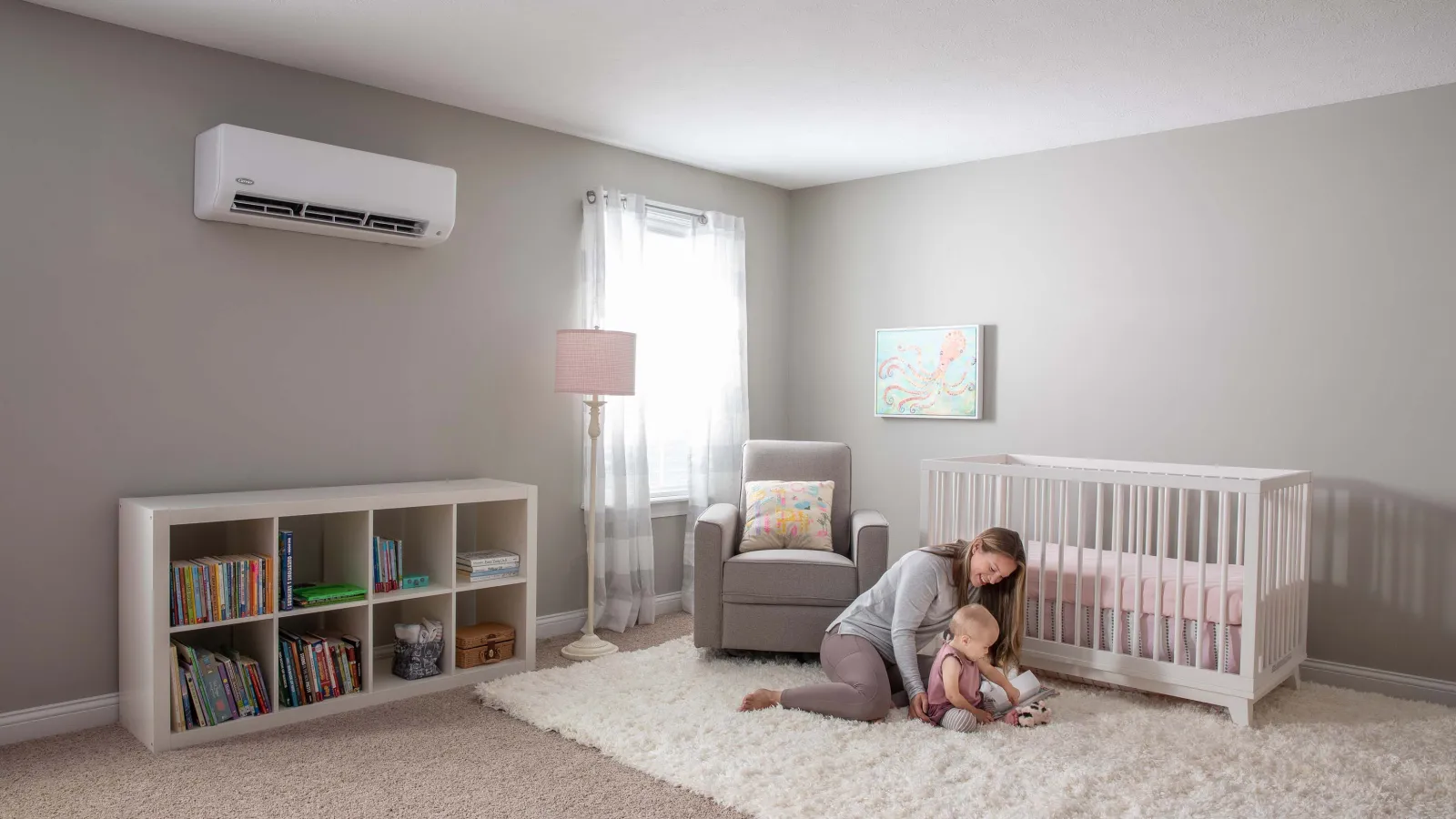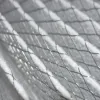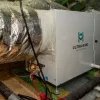Carbon monoxide was making our client sick. We knew this because she told us that she and her family had been having headaches. Bad headaches. And only when they were inside the house.
The culprit? A cracked heat exchanger. That’s often how it goes.
But a cracked heat exchanger isn’t the only potential source of a carbon monoxide leak. There are several others. If you have gas appliances, identifying and eliminating carbon monoxide leaks isn’t just a good idea – it’s essential for avoiding serious health problems.
In serious cases, it can be a matter of life and death.
First things first: Install carbon monoxide detectors
Carbon monoxide, or CO, is an odorless gas produced whenever you burn fuel. We breathe in small amounts of CO every time we walk by an idling car or smell smoke from a nearby fire. When you’re outside, CO isn’t usually a big deal. It’s when CO becomes concentrated in an enclosed space – your home, say – that it can be dangerous.
Symptoms of carbon monoxide poisoning include:
- Headaches
- Dizziness
- Vomiting
- Confusion
- Weakness
- Chest pain
According to the Centers for Disease Control (CDC), more than 400 Americans die each year from non-fire-related CO exposure. That doesn’t have to happen to you, though. There’s a near-foolproof way to ensure you’re not inhaling potentially deadly amounts of CO: Install a carbon monoxide detector on every floor of your home, preferably as high above the ground as possible.
It’s that simple. Nowadays, many smoke alarms also double as CO detectors, so you can protect your family from both risks using a single piece of equipment.
If you’ve got gas appliances in your home, you need a CO detector. If you don’t have gas lines connected to your home but you do have (and use) a wood-burning fireplace, a CO detector is still a good idea. Not all CO detectors are the same, but the ones we often install for clients measure CO concentrations down to 10 PPM.
Now, about mitigating those CO risks. What can you do to prevent CO leaks and keep your family safe?
1. Have your furnace inspected every year
An annual furnace inspection is a great way to make sure your equipment is working properly. It’s also a great time to check for CO leaks, so be sure your HVAC contractor arrives at your home with dedicated CO detection equipment!
Here are the two of the most common sources of CO leakage we find when we perform equipment inspections for our clients:
- Dirty equipment or components: From dirty filters to blocked flue vents, failure to clean your furnace and associated components can cause CO to leak inside your home. These are the easiest problems to fix – we just clean everything for you.
- Cracked heat exchanger: This was the issue in our example from above, and it’s a common scenario. When things are working properly, noxious gases like CO stay inside the heat exchanger until they’re exhausted to the outdoors. However, heat exchangers often crack due to age, wear and tear, or exposure to moisture (rust). When the heat exchanger is cracked, CO can leak into your home.
Regular maintenance makes your furnace last longer and helps you stay safe. At PV Heating, Cooling & Plumbing, we look closely for these hidden problems during our fall HVAC inspection and as part of our whole home assessment.
2. Venting CO into your chimney? Make sure it’s going up, not down.
In some homes, gas furnaces, water heaters, and clothes dryers exhaust CO into the chimney. From a standpoint of pure physics, this arrangement makes sense. If the appliance is located closer to the chimney than to an exterior wall, why not just vent the CO there? It’s a great idea…
…until it isn’t. The problem with venting CO into your chimney is that a chimney liner doesn’t last forever – it can crack just like your heat exchanger. And when a chimney liner fails, you might be bringing CO exhaust into your living space. Not good.
Unfortunately, monitoring the integrity of your chimney liner isn’t easy. You need special equipment to make it happen. Chimney sweeps can do it. So can a home performance specialist whose job it is to look for CO leaks. During our home assessments, we perform a combustion safety test that puts your home under a “worst case” depressurization scenario. That way, we can ensure that CO is being properly vented through your chimney.
3. Avoid unintended backdrafting
Negative pressure can be a good thing. You want to ventilate your home, right? Turning on a fan now and then is a good way to do that.
But if you’re creating negative pressure from, say, a dryer somewhere near a gas appliance, you might cause that gas appliance not to exhaust properly. The CO could backdraft into your home, even though nothing is broken!
Believe it or not, this scenario is not uncommon. We’ve detected CO in homes when no equipment or components appeared to be compromised. It was only when a nearby piece of equipment created negative pressure that the CO began to enter the home rather than leave it.
The solution? It depends on the specific problem. In some cases, you’ll need to create a mechanical room that’s sealed with high and low ventilation. Other times, replacing an old furnace with a sealed combustion model is the best fix.
4. Just say no to vent-free gas fireplaces
If you’ve made it this far, you can probably tell that we’re concerned with venting CO out of your home so that none of it enters your living space. It’s an important thing to do. Every appliance that burns fuel should exhaust its poisonous fumes to the outdoors. Period.
So why would anyone intentionally install a ventless gas appliance in their home? Beats us. But nevertheless…
Maybe you’ve heard of “vent-free” gas fireplaces that some people put in their living rooms. Must be convenient not to have to clean a chimney, right? Probably. But unless you live in an older house with lots of air leaks or near-constant air exchange, that vent-free fireplace is releasing CO into your home – and it’s staying there.
The Building Science Corporation says you should never install a ventless fireplace. If you’re thinking about getting one, well… don’t! If your home already has one, we recommend replacing it with a vented one or just not using it. The risk is real, and it just isn’t worth it.
It’s all about taking safety seriously
Gas appliances are great, but you’ve got to make sure they’re operating properly. Checking for CO should be part of any professional furnace inspection. Simple as that.
At PV Heating, Cooling & Plumbing, safety is a big deal. From shoddy workmanship to deteriorated equipment, we see lots of potential safety hazards in people’s homes. And we see them all the time. Part of what we do is show people ways to mitigate or eliminate those risks, all the while improving the comfort and efficiency of their home environment.
If you’re not sure whether you’re 100% safe from CO leaks, it’s time to find out. Take a look at our whole home assessment checklist, which includes CO detection, and contact us to schedule an appointment!






